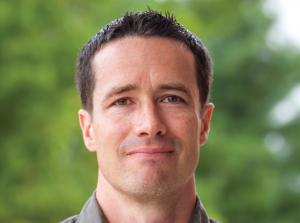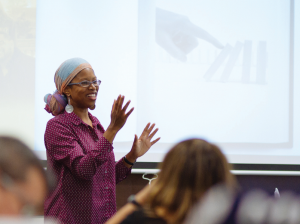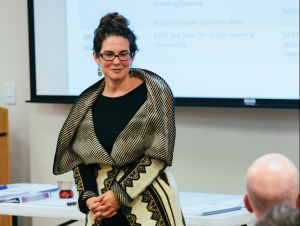NEW FACES, SAME COMMITMENT TO INNOVATION

CJP innovates. Co-founding director John Paul Lederach challenged conflict resolution advocates to focus on relationships. Howard Zehr pioneered restorative justice. Barry Hart connected trauma healing to peacebuilding. Lisa Schirch centered ritual as a tool for transforming conflicts. I challenged the efficacy of “getting to yes” for complex conflicts. Gloria Rhodes is connecting personal awareness with skill-building to foster conflict competency. Carl Stauffer is promoting restorative justice as a social movement. Amy Potter Czajkowski and David Anderson Hooker used the Strategies for Trauma and Resilience framework to write a manual on transforming historical harms.

But all these great innovations did not help in Charlottesville. We can no longer turn away from the challenge of transforming a culture that promotes violence and refuses to address historical harms.
Fortunately, CJP hired the next generation of innovators two years ago. Johonna Turner and Tim Seidel will start teaching Foundations of Justice and Peacebuilding II in spring 2018. We expect their blend of cultural studies, restorative justice, community organizing, nonviolent resistance, and policy advocacy to yield the next CJP practice innovations.
HOW DOES CJP CREATE A LIBERATING LEARNING SPACE?
Many graduates rave about the experience of CJP as an authentic community. The faculty and staff embrace and work with the whole person for a reason. A peacebuilder who is not grounded, centered and self-aware is likely to do more harm than good.

Our students are not heads on a stick, all brain with no body, emotions or spirit. In seeing our students as whole people, we also can’t ignore the trauma they bring into the classroom. And we can’t just talk about topics like injustice, violence, war, rape and racism without recognizing the trauma this can induce.
For the first time this fall, Strategies for Trauma Awareness and Resilience (STAR) program director Katie Mansfield spent a day of student orientation teaching everyone to recognize the ways that trauma responses can show up in the classroom. The faculty and students concluded the training by making some agreements about ways that everyone can do their part to create a learning community that cares and learns together.
—Jayne Seminare Docherty, Academic Programs Director